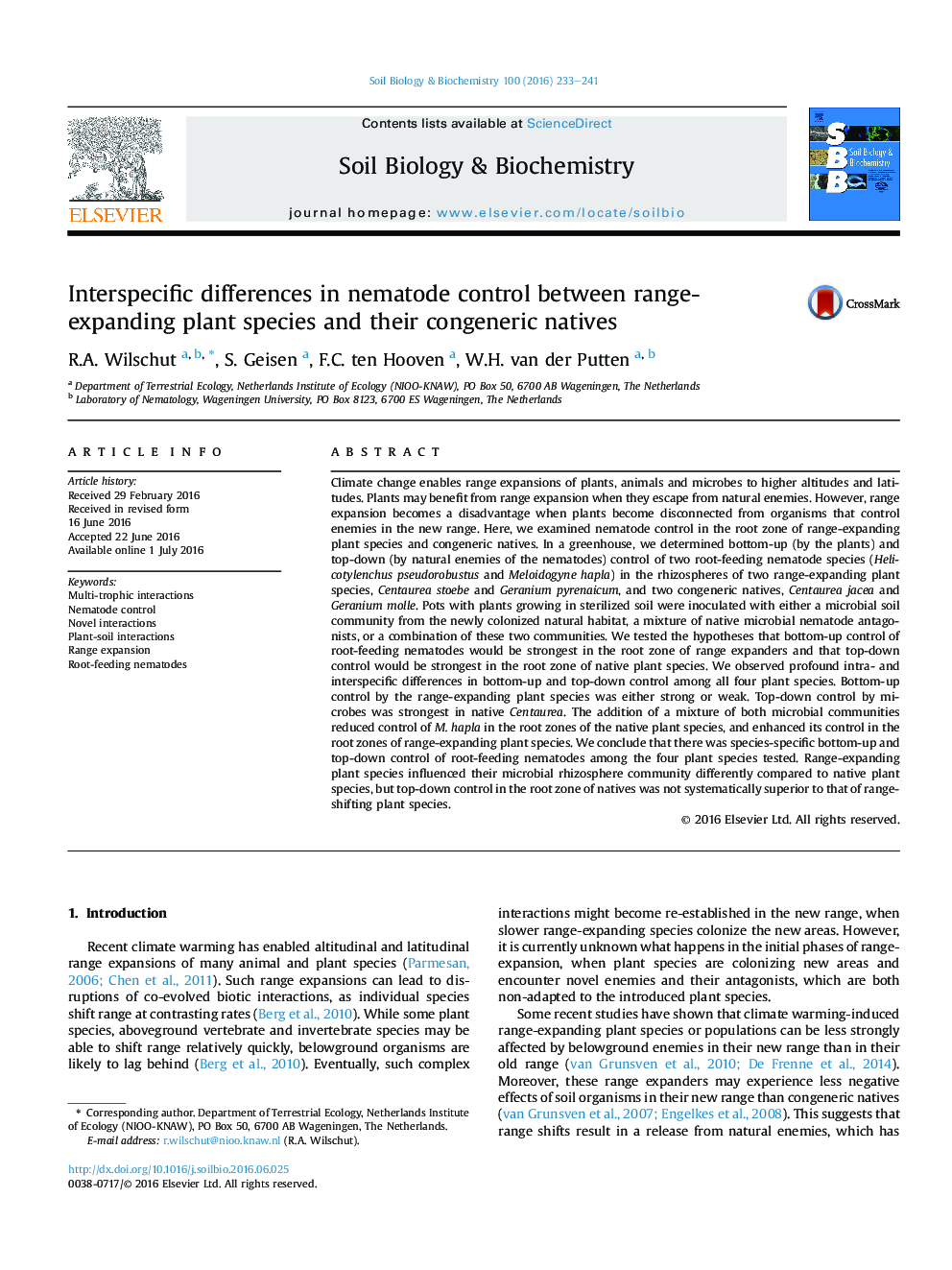| کد مقاله | کد نشریه | سال انتشار | مقاله انگلیسی | نسخه تمام متن |
|---|---|---|---|---|
| 8363518 | 1542584 | 2016 | 9 صفحه PDF | دانلود رایگان |
عنوان انگلیسی مقاله ISI
Interspecific differences in nematode control between range-expanding plant species and their congeneric natives
ترجمه فارسی عنوان
تفاوت بین گونه ای در کنترل نماتد بین گونه های گیاهی گسترش می یابد و بومیان همجنسگرای آن
دانلود مقاله + سفارش ترجمه
دانلود مقاله ISI انگلیسی
رایگان برای ایرانیان
کلمات کلیدی
تعاملات چند زبانه، کنترل غیرمواد، تعاملات رمان، تعاملات گیاهی و خاک، گسترش دامنه، نماتدهای ریشه،
موضوعات مرتبط
علوم زیستی و بیوفناوری
علوم کشاورزی و بیولوژیک
دانش خاک شناسی
چکیده انگلیسی
Climate change enables range expansions of plants, animals and microbes to higher altitudes and latitudes. Plants may benefit from range expansion when they escape from natural enemies. However, range expansion becomes a disadvantage when plants become disconnected from organisms that control enemies in the new range. Here, we examined nematode control in the root zone of range-expanding plant species and congeneric natives. In a greenhouse, we determined bottom-up (by the plants) and top-down (by natural enemies of the nematodes) control of two root-feeding nematode species (Helicotylenchus pseudorobustus and Meloidogyne hapla) in the rhizospheres of two range-expanding plant species, Centaurea stoebe and Geranium pyrenaicum, and two congeneric natives, Centaurea jacea and Geranium molle. Pots with plants growing in sterilized soil were inoculated with either a microbial soil community from the newly colonized natural habitat, a mixture of native microbial nematode antagonists, or a combination of these two communities. We tested the hypotheses that bottom-up control of root-feeding nematodes would be strongest in the root zone of range expanders and that top-down control would be strongest in the root zone of native plant species. We observed profound intra- and interspecific differences in bottom-up and top-down control among all four plant species. Bottom-up control by the range-expanding plant species was either strong or weak. Top-down control by microbes was strongest in native Centaurea. The addition of a mixture of both microbial communities reduced control of M. hapla in the root zones of the native plant species, and enhanced its control in the root zones of range-expanding plant species. We conclude that there was species-specific bottom-up and top-down control of root-feeding nematodes among the four plant species tested. Range-expanding plant species influenced their microbial rhizosphere community differently compared to native plant species, but top-down control in the root zone of natives was not systematically superior to that of range-shifting plant species.
ناشر
Database: Elsevier - ScienceDirect (ساینس دایرکت)
Journal: Soil Biology and Biochemistry - Volume 100, September 2016, Pages 233-241
Journal: Soil Biology and Biochemistry - Volume 100, September 2016, Pages 233-241
نویسندگان
R.A. Wilschut, S. Geisen, F.C. ten Hooven, W.H. van der Putten,
